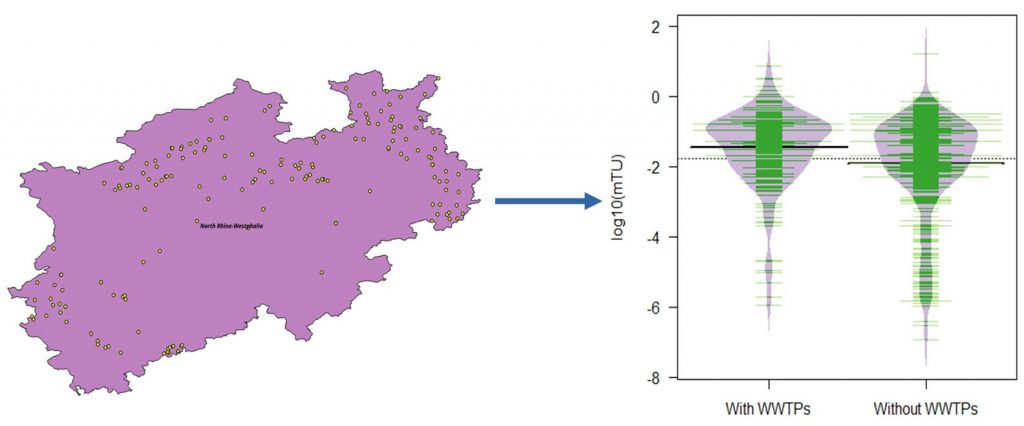In this post, Trong Dieu Hien Le talks about their recently published paper “Contribution of waste water treatment plants to pesticide toxicity in agriculture catchments”.
Pesticide residues are frequently found in water bodies and may threaten freshwater ecosystems and biodiversity. In addition to subsurface leaching and surface runoff from treated agricultural fields, pesticides may enter streams via effluents from waste water treatment plants (WWTPs). Because of incomplete removal of pesticides as well as metabolites and transformation products that are potentially transformed during waste water treatment processes, pesticides can pass through WWTPs and discharge directly into surface water.
In this article, we aimed at assessing the contribution of WWTPs to pesticide toxicity in small agricultural streams on a large spatial scale using pesticide monitoring data from Germany. We compared the pesticide toxicity of sampling sites with and without WWTPs in the upstream catchments. We found that sampling sites with WWTPs upstream are subject to higher pesticide toxicity, which shows that WWTPs are a relevant source of pesticide input into stream ecosystems.

Governmental pesticide monitoring sites of North Rhine-Westphalia (left) and pesticide toxicity with and without waste water treatment plants (WWTPs) (right) (graphic by T. D. H. Le)
Herbicides contributed most of total pesticide pollution from WWTPs, which can be explained by their higher hydrophily compared to most fungicides and insecticides. A few herbicide compounds (diuron, terbuthylazin, isoproturon, terbutryn and metazachlor) dominated the herbicide toxicity. Interestingly, we found no clear relationship between pesticide toxicity and the upstream distance to the WWTP, which might be attributed to the variable dilution potentials of the streams (see recent blog post by Ralf Schäfer). Overall, our study demonstrates that WWTPs still contribute to pesticide toxicity and that particularly water soluble pesticides are released.
The paper authored by Trong Dieu Hien Le, Andreas Scharmüller, Mira Kattwinkel, Ralph Kühne, Gerrit Schüürmann and Ralf B. Schäfer was published in Ecotoxicology and Environmental Safety.
